When I heard about Lumineux teeth whitening strips, I was skeptical but hopeful. White or even a light shade of ivory is usually not possible without the aid of harmful ingredients.
Lumineux is the first dentist-formulated, naturally derived, clinically tested, and certified non-toxic oral care company in the world. Lumineux teeth whitening strips are made with uncompromising ingredients or as they like to say, ingredients you can swallow.
The real clincher is that their products work. In fact, they sent their formulas to world renowned University laboratories to see how well they work compared to the leading brands in every category.
*Suzi (Gurl Gone Green) is a participant in the Amazon Services LLC Associates Program, an affiliate advertising program designed to provide a means for sites to earn advertising fees by advertising and linking to amazon.com.
Related Content: My Natural Oral Care Routine
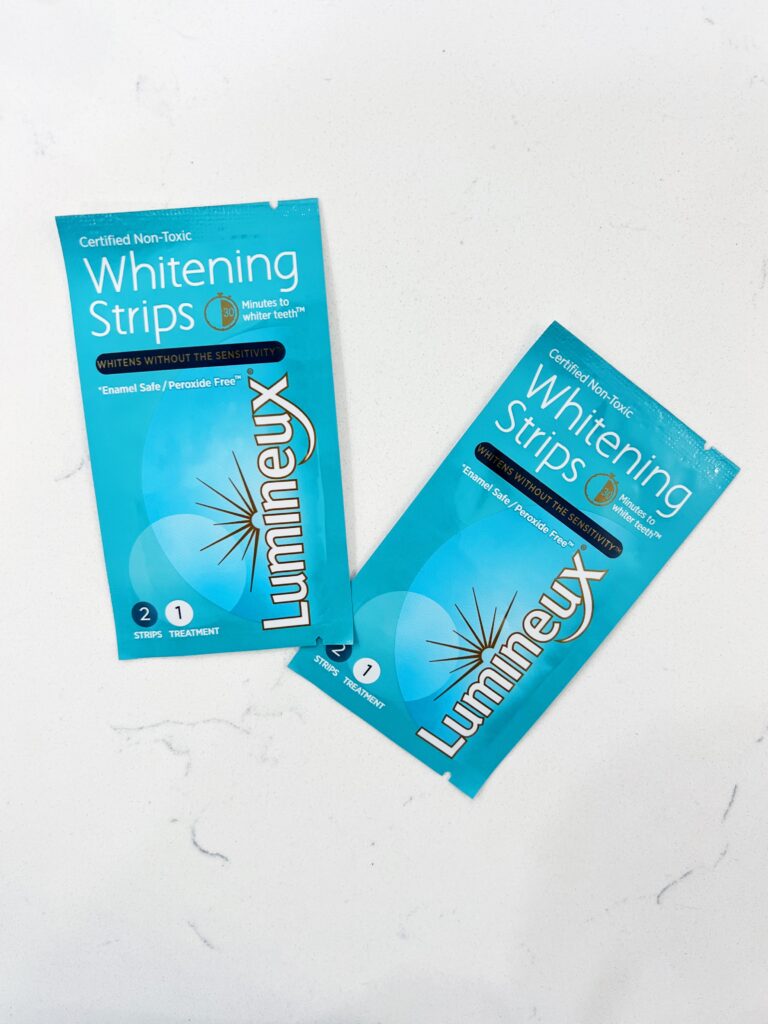
Ingredients To Avoid
While this is not an exhaustive list, these are some of the more common ingredients to be aware of in teeth whitening strips.
Hydrogen peroxide can affect the content of enamel by reducing calcium and phosphorus and increase the risk of tooth sensitivity and gingival irritation.1
Carbamide peroxide which is commonly found in most whitening strips today is made up of hydrogen peroxide and urea. The major difference between hydrogen peroxide and carbamide peroxide is the rate of release. Carbamide peroxide takes longer to break down than hydrogen peroxide but both can have potential adverse effects such as roughening of the surface of the enamel.2
Chlorine dioxide is sometimes used in place of hydrogen peroxide especially in settings like spas or mall kiosks but it’s not the better choice. In fact, according to the British Dental Journal, exposing your teeth for 20 minutes with a .5% concentration of chlorine dioxide solution can be enough to remove enamel and leave teeth with a rough surface, and increase sensitivity.3
Sodium chlorite can easily convert to chlorine dioxide in the presence of acid. Sodium chlorite can reduce the hardness of teeth and pave the way for future surface abrasions.4
Sodium hydroxide is considered a caustic agent, meaning it causes corrosion. While some people would say that it’s “safe” to use in small amounts, I’m not comfortable putting something in my mouth that isn’t meant to be inside my body.5
Polyethylene glycol (PEG-8) is another ingredient that is commonly found in teeth whitening treatments. According to the Environmental Working Group, “PEG is used for synthetic polymers of ethylene oxide; these polymers may be contaminated with potentially toxic manufacturing impurities such as 1,4-dioxane”. 6
Sodium saccharin is used for taste because it’s a non-nutritive artificial sweetener. While the FDA considers it safe for consumption, artificial sweeteners can mess with your gut microbiome, cause allergic reactions, among other health issues.7
Related Content: Best Natural Toothpaste Brands
Lumineux Whitening Strips Review
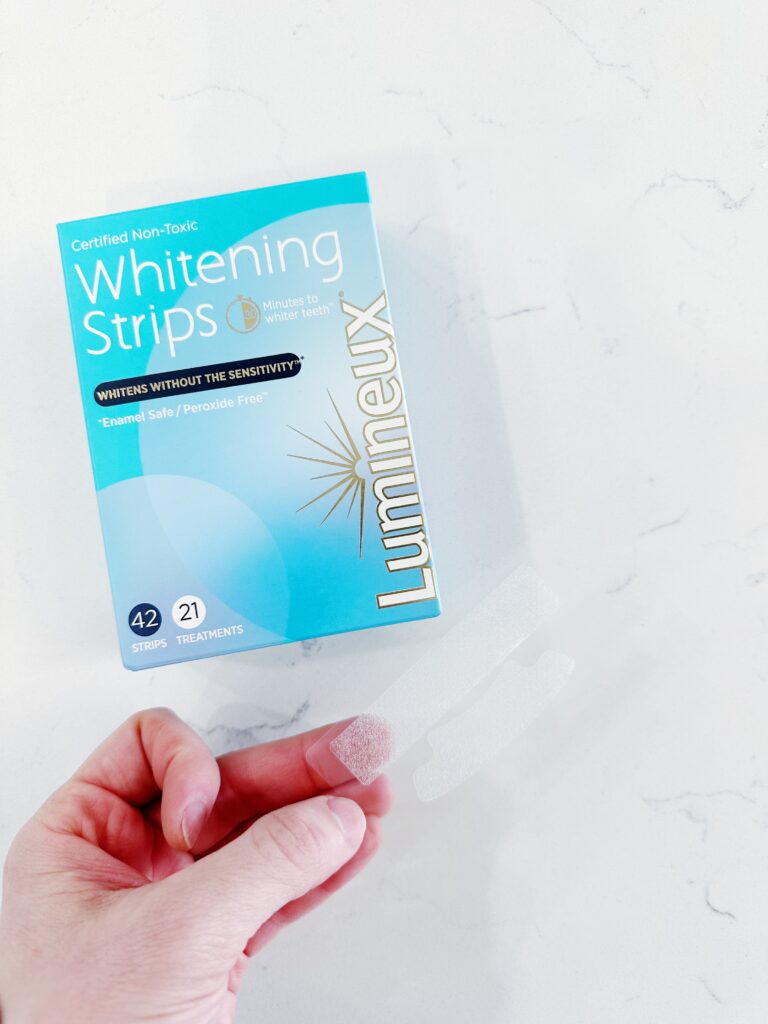
Ingredient List
Vegetable Glycerol, Deionized Water, Carbomer, Carboxymethyl, Coconut Oil, Dead Sea Salt, Sage Oil, Lemon Peel Oil
How To Use The Lumineux Whitening Strips (Step By Step)
- Remove strips from backer.
- Place upper and lower strips on your teeth.
- Wait for 30 minutes.
- Remove strips from teeth.
- Rinse mouth (you may need to brush your teeth).
- Repeat as often as you want because these whitening strips are certified non-toxic and enamel safe.
- For best results, do not eat or drink for 30 minutes after using teeth whitening strips.
How Often Should You Use
Lumineux recommends using the strips for 7 days in a row, then 1-2x a week for maintenance. However, you can use these strips daily if you want, because they are non-toxic and safe for your tooth enamel.
How Long Will It Take To See Results?
You can see results within 30 minutes, but for best results, use every day for a week.
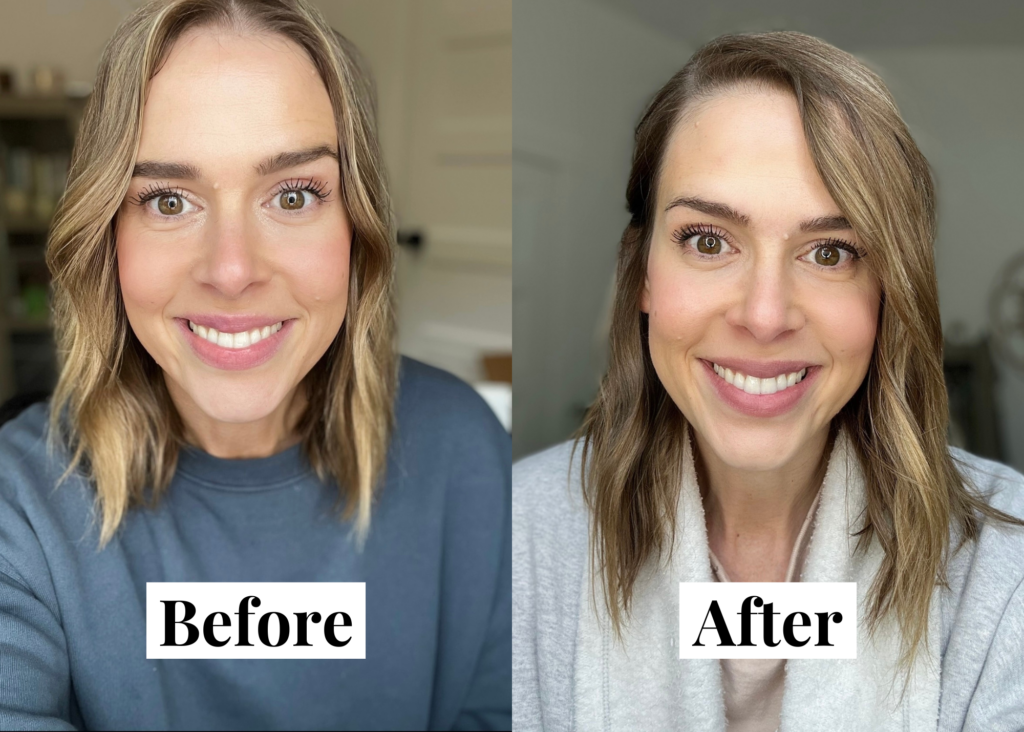
Review
I used their pack of 21 teeth whitening treatments and I did see results, nothing transformational but my teeth are brighter and a little lighter. The best part is that my teeth didn’t feel sensitive after using them.
One of the drawbacks is that when I removed the strips from my teeth, they left behind this gummy, gel-like substance that definitely required brushing not just rinsing afterwards. However, it’s a minor inconvenience for a non-toxic approach to a brighter smile.
Related Content: Risewell Toothpaste Review
Conclusion: Do Lumineux Teeth Whitening Strips Actually Work?
In my experience, Lumineux teeth whitening strips provide a lighter, brighter smile, but not a dramatic whitening effect.

Lumineux Whitening Strips FAQ’s
Does Lumineux cause sensitivity?
One of the hallmarks of Lumineux products is that they have been clinically proven to not cause sensitivity. Is this a game changer or what?
Does Luminex damage enamel?
Lumineux teeth whitening strips contain potent stain-fighting oils that break up stains without damaging enamel. It’s almost too good to be true!
Is Lumineux better than Crest Whitening Strips?
In a comparative study, Lumineux whitening strips demonstrated a comparable whitening effect to Crest whitening strips.
However, Lumineux uses non-toxic ingredients to achieve a whiter smile, whereas Crest 3D whitening strips uses ingredients such as hydrogen peroxide, PEG, sodium hydroxide, sodium saccharin not to mention polypropylene for the backing and polyethylene for the textured strip along with other questionable ingredients.8
It’s also important to note that in another study, the ingredients in the Crest strips were found to roughen composite samples which can lead to a build-up of plaque, bacterial growth and eventually periodontal disease.
The Lumineux strips on the other hand, were found to be safe for composites, porcelain veneers, and crowns.9
If Lumineux whitening strips provide a similar effect to Crest whitening strips, why not use a formula without bleach and other harmful ingredients?
Should you brush your teeth before or after using Lumineux Whitening Strips?
It is recommended that you either rinse your mouth or brush your teeth after using Lumineux teeth whitening strips.
Can Lumineux Whitening Strips leave white spots on your teeth?
According to Lumineux, white spots can appear from having your teeth covered for a period of time. As soon as your teeth start getting oxygen again, the white spots will start to dissipate (usually under 24hrs).
If you have tried Lumineux, share your results below!
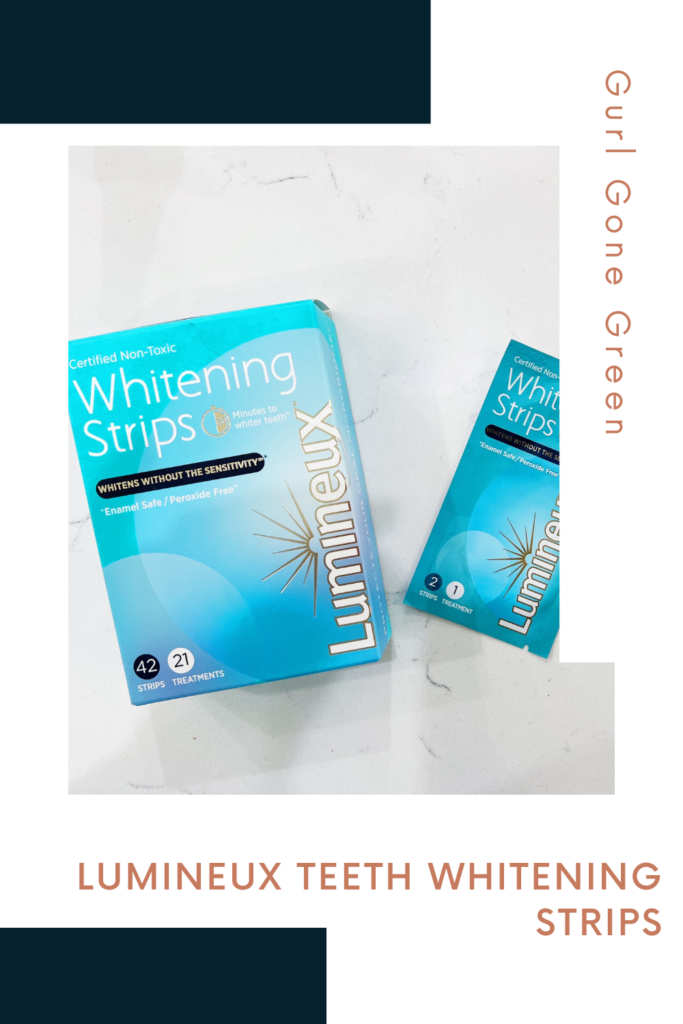
References
- Dourado Pinto AV, Carlos NR, Amaral FLBD, França FMG, Turssi CP, Basting RT. At-home, in-office and combined dental bleaching techniques using hydrogen peroxide: Randomized clinical trial evaluation of effectiveness, clinical parameters and enamel mineral content. Am J Dent. 2019 Jun;32(3):124-132.
- Fearon J. Tooth whitening: concepts and controversies. J Ir Dent Assoc. 2007 Autumn;53(3):132-40.
- Li, Y., Greenwall, L. Safety issues of tooth whitening using peroxide-based materials. Br Dent J 2013; 215:29–34.
- BDJ study on dangers of teeth whitening products prompts large response. Br Dent J 2019; 226: 391.
- Environmental Working Group. Sodium Hydroxide [Internet]. Available from: https://www.ewg.org/skindeep/ingredients/706075-SODIUM_HYDROXIDE/#.W6J4-JP25QI
- Environmental Working Group. PEG 8 [Internet]. Available from: https://www.ewg.org/skindeep/ingredients/704655-PEG8/
- Francisco Javier Ruiz-Ojeda, Julio Plaza-Díaz, Maria Jose Sáez-Lara, Angel Gil, Effects of Sweeteners on the Gut Microbiota: A Review of Experimental Studies and Clinical Trials, Advances in Nutrition, Volume 10, Issue suppl_1, 2019 Jan; S31–S48.
- Takesh et al., Effects of a Novel Whitening Formulation on Dental Enamel. Dentistry 2017, 7:4.
- Takesh et al., Evaluating the Whitening and Microstructural Effects of a Novel Whitening Strip on Porcelain and Composite Dental Materials. Dentistry 2017, 7:8.

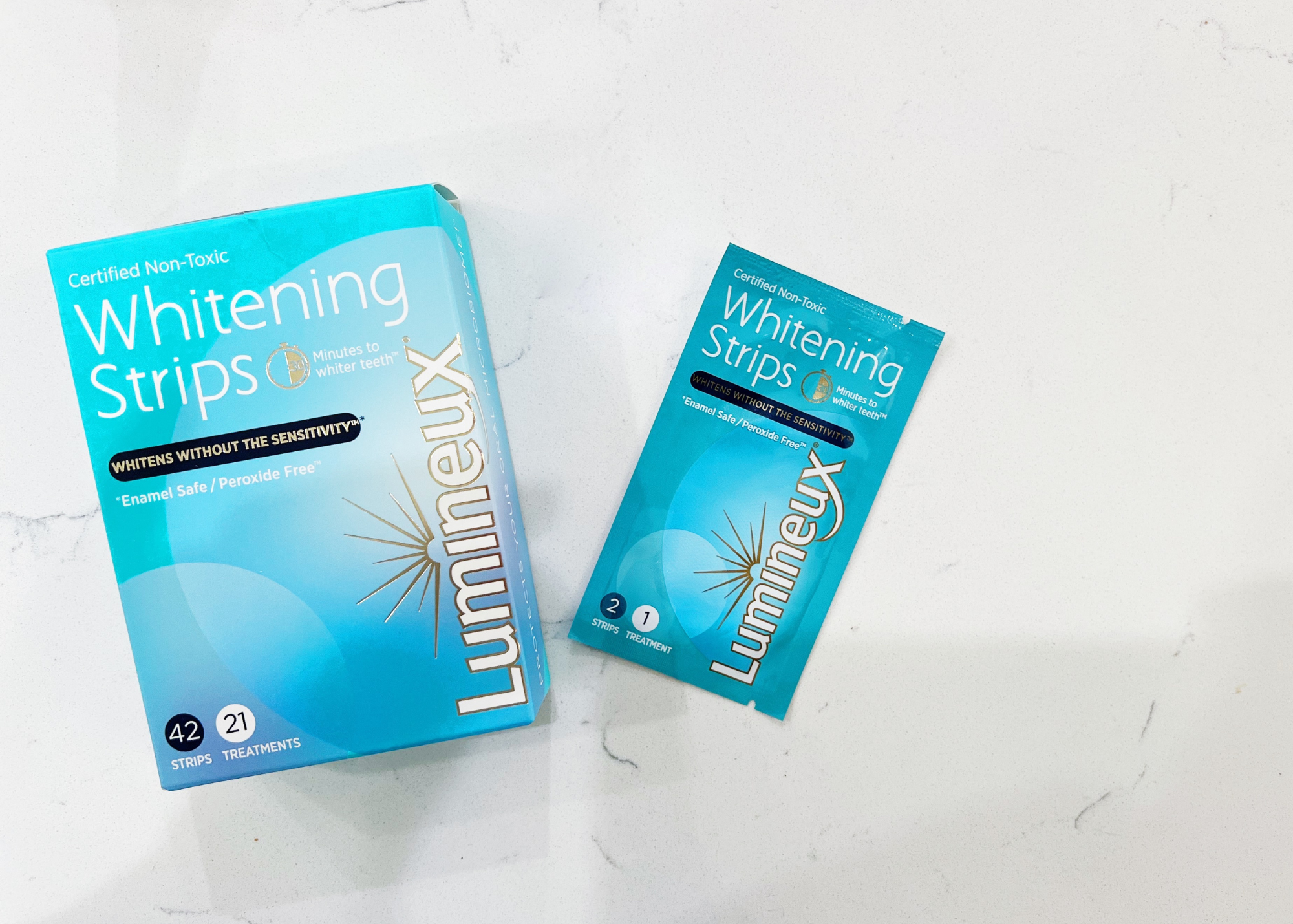


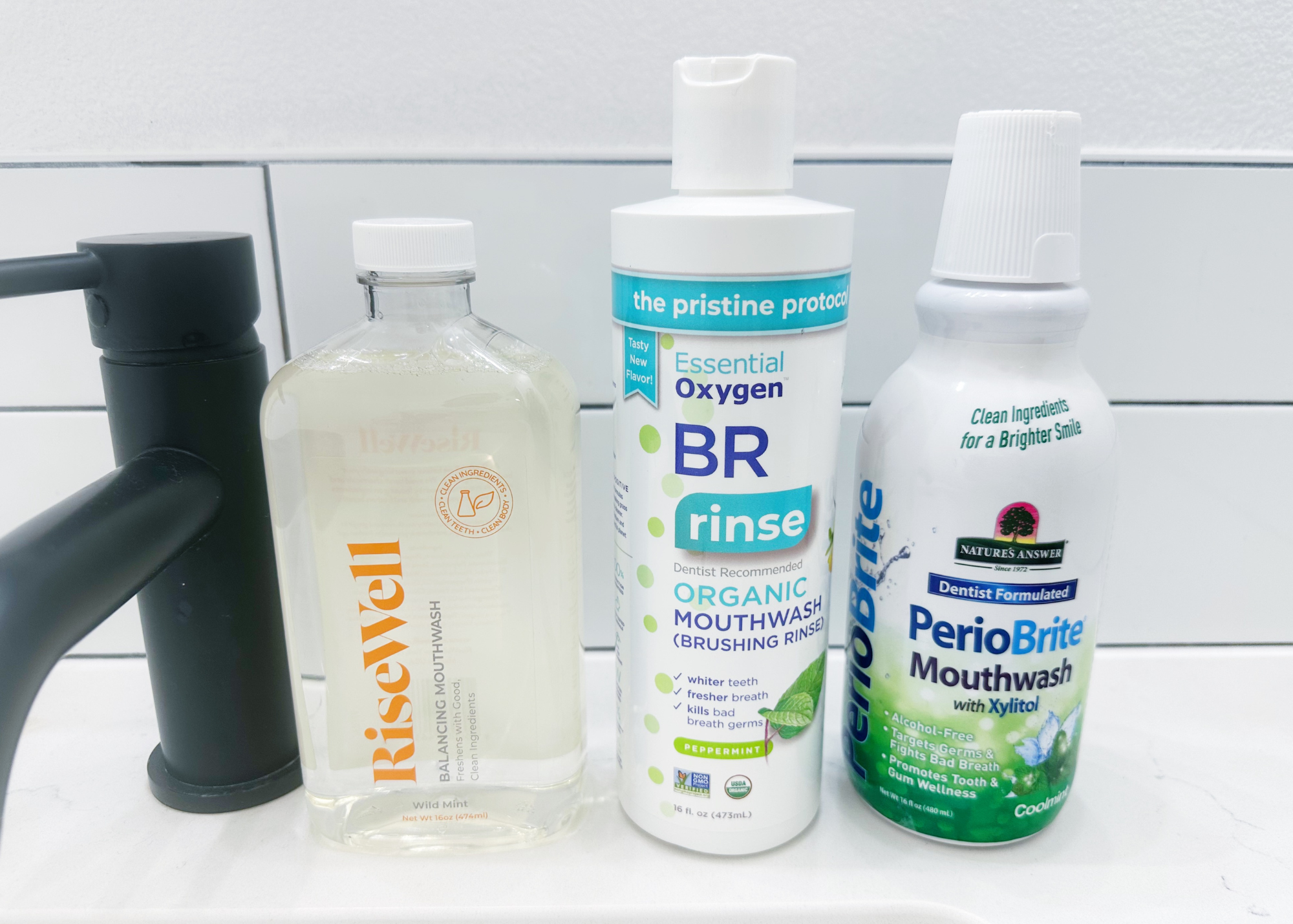
0 Comments